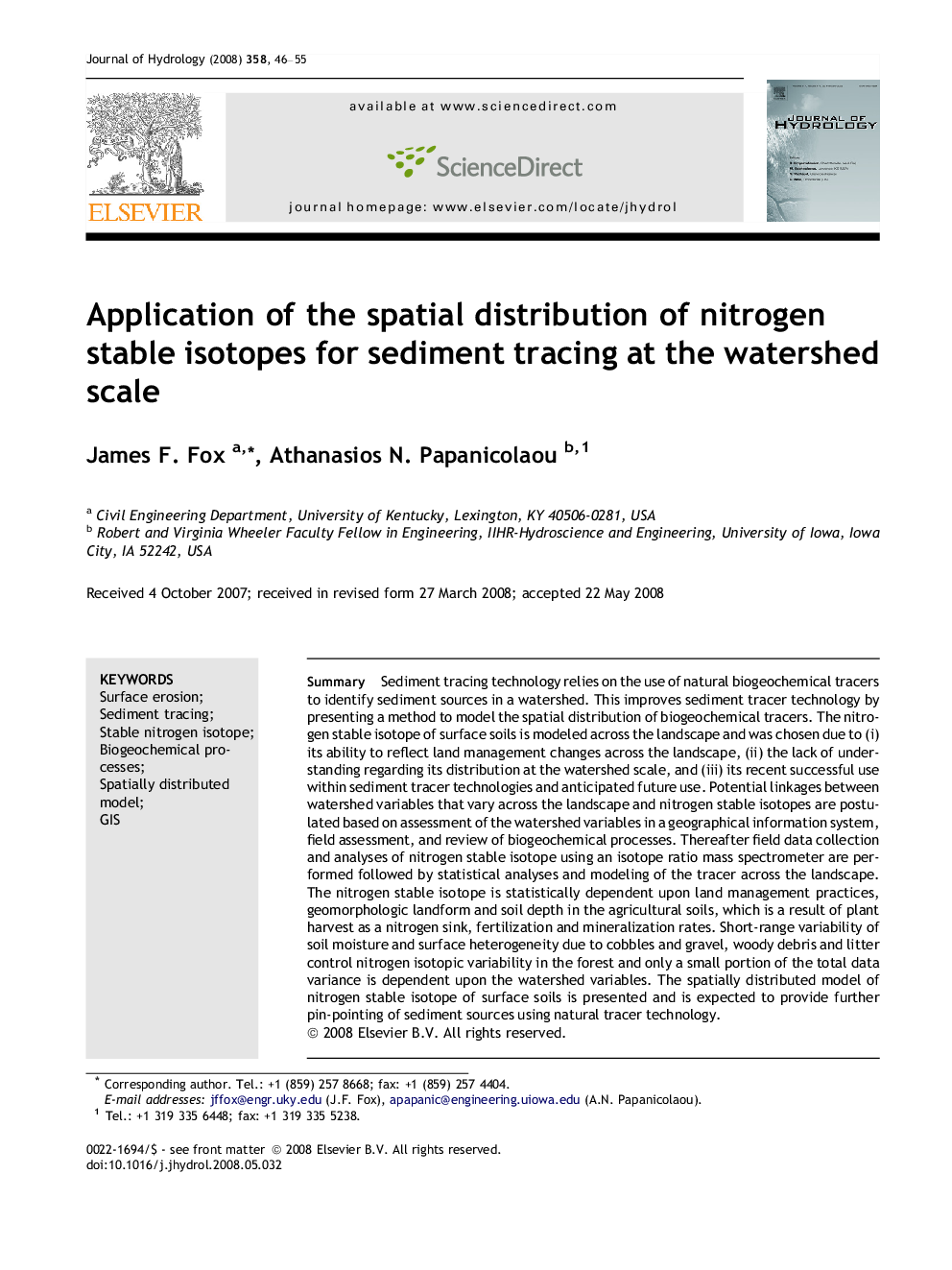| Article ID | Journal | Published Year | Pages | File Type |
|---|---|---|---|---|
| 4579206 | Journal of Hydrology | 2008 | 10 Pages |
SummarySediment tracing technology relies on the use of natural biogeochemical tracers to identify sediment sources in a watershed. This improves sediment tracer technology by presenting a method to model the spatial distribution of biogeochemical tracers. The nitrogen stable isotope of surface soils is modeled across the landscape and was chosen due to (i) its ability to reflect land management changes across the landscape, (ii) the lack of understanding regarding its distribution at the watershed scale, and (iii) its recent successful use within sediment tracer technologies and anticipated future use. Potential linkages between watershed variables that vary across the landscape and nitrogen stable isotopes are postulated based on assessment of the watershed variables in a geographical information system, field assessment, and review of biogeochemical processes. Thereafter field data collection and analyses of nitrogen stable isotope using an isotope ratio mass spectrometer are performed followed by statistical analyses and modeling of the tracer across the landscape. The nitrogen stable isotope is statistically dependent upon land management practices, geomorphologic landform and soil depth in the agricultural soils, which is a result of plant harvest as a nitrogen sink, fertilization and mineralization rates. Short-range variability of soil moisture and surface heterogeneity due to cobbles and gravel, woody debris and litter control nitrogen isotopic variability in the forest and only a small portion of the total data variance is dependent upon the watershed variables. The spatially distributed model of nitrogen stable isotope of surface soils is presented and is expected to provide further pin-pointing of sediment sources using natural tracer technology.
